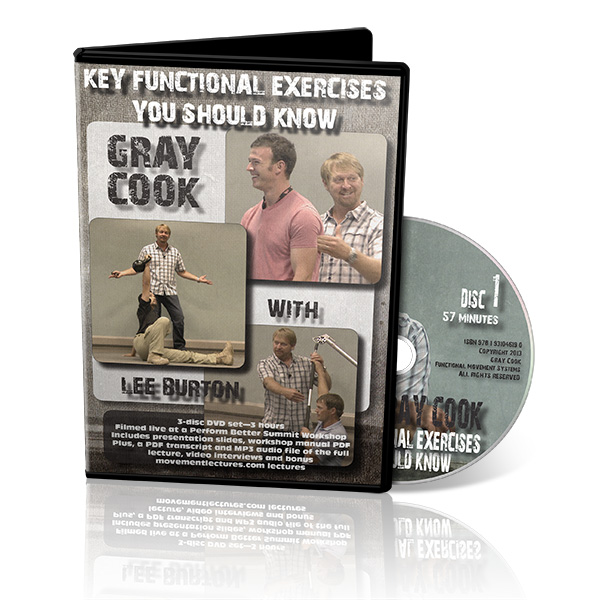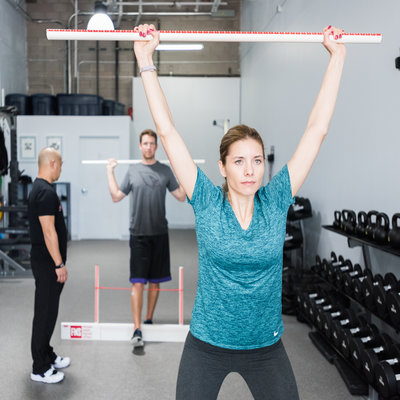Manage Your Minimums
Written by Gray Cook FMS
Sometimes I feel like telling people to stop posting maximums unless they’ll also post minimums. Whether things are posted on the Internet or the gym wall, we always seem to post our strengths and somehow neglect to report our weaknesses—to others as well as ourselves. It is easy to fall into a situation of looking at numbers and posting maximums in our training. It’s human nature to do more of what we do well, and less of what we do not do well
It can be a problem if one of the things we don’t do well is an essential element of mobility, stability or movement. It can also present a problem if the weakness or limitation is a fundamental performance parameter. Let’s just all agree we are much more enthusiastic about posting our maximums than managing our minimums. Let’s also agree that if we, the exercise and rehabilitation professionals, can lose perspective, then we must also be vigilant when those who trust and depend on our expertise are not enthusiastic about managing their minimums.
To clarify the phrase about posting maximums, this might be weightlifting, running times or any number of physical measurements that demonstrate success. But many of us also have a minimum, and we also may not do well with certain mobility or stability tests. One might be great with extended endurance activities, but poor with interval training and high intensity bursts. Another has great upper body lifting stats and poor lower body lifting stats. She has an asymmetry on the Y-Balance Test. He has a very low score on the FMS. Human nature entices us to focus on our most positive attributes. However, the genius of developing talent is about attacking minimums. The true nature of coaching and training is about keeping things in perspective and managing minimums. More than one Hall of Fame coach has expressed some version of it’s not about what we do well—it’s about all the things we no longer do poorly.
I recommend two books to anyone interested in training and personal development. They are Talent Is Overrated and The Talent Code.
Both of these books connect the dots for success for the self-coached individual and professional, including coaches, trainers and educators. There is a common thread shared by both books and it’s about the way we develop perspective and the way we practice. While the masses make maximums part of identity, the truly talented are just as clear that their minimums are also part of their identities. In fact, our minimums are usually our weakest links and influence outcomes more than our superlatives. Whether they are mobility issues, stability problems, performance troubles, or skill and technique flaws, minimums usually represent the limitations that control performances. These limitations, once removed or at least managed, will allow for greatly improved skill acquisition, much better performance, much greater durability and also reduce wasted time doing ineffective training. Our minimums rob efficiency and waste valuable training time.
Many times minimums can actually be unknown entities. Just follow me and my partner in crime, Dr. Lee Burton, to a Functional Movement Screening seminar and see the scenario unfold before your eyes. Our audience is filled with intelligent and fit individuals. A majority of these individuals are surprised with their screen results. They are even more surprised when they hear what area the screening technology points to as the most compelling minimum or greatest weakness. Expert training and coaching can bring us close to our minimums, and screening and testing can be the most systematic and reliable way to identify the issues that are robbing our true potentials.
If you self-train, you should have a short list of both your maximums and minimums in your training journal.
Coaches and trainers, remember that the best coaches of all times have an excellent perspective of both an athlete’s or client’s maximums and minimums. Both of these pieces of information together help the professional understand problems and potentials. It is a freshman mistake in coaching to simply exploit an athlete’s strength and not challenge the individual to complete gaining or athleticism by working on weaknesses. It is the seasoned coach or the wise mentor who quickly appraises both strengths and weaknesses, and delegates a majority of training time to the areas of weakness. It is not as much fun and is actually intimidating, but in the long run it is the most complete form of training and education we can achieve.
Look around. You will not find many people posting their minimums at the gym or on the Internet. You will find them posting their maximums and discussing their proficiency in their workouts. However, now you know the best way to help them improve those maxims, if they should ask your advice. Simply redirect the focus to the minimums and watch all the stats improve. This perspective is essential when we are managing large groups like the fire service, military operators or groups of school children. It is more beneficial and more helpful to the group as a whole to identify minimum levels of competency across a wide array of attributes, and to make the entire group achieve statistics above a minimum accepted level of proficiency of each attribute.
When we screen groups, our primary goal is not to find a perfect movement screen. The goal is to get as many individuals about the cut (lowest acceptable FMS score), the minimum level of risk. This is truly what training a group or team is all about. Leave no one behind. Work on minimums first. Maximums will take care of themselves… and you know you want to post ’em!
Related Resources
-
Key Points about Key Exercises
Posted by Gray Cook





